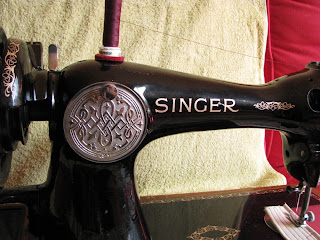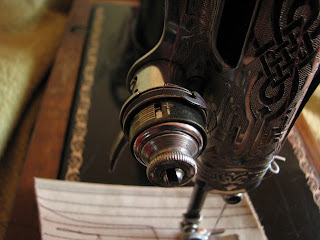I've always had a soft spot for log cabin quilts. They are fun to sew, and I love how you can play with a variety of layouts. So, when I read about log cabin rulers by Marti Michell, I bought them in two sizes.
The photo shows the ruler for the widest strip size available: the 2"/1" ruler. It's the perfect ruler for jelly rolls, because all you need to do is cut the strips to the appropriate lengths.
 | |
| Log Cabin Ruler |
As you can see in the closeup picture, the strips you cut are the exact length of each individual strip. Which means that you don't need to cut excess fabric once you've added a new strip. I find that very helpful in keeping the blocks square.
What the picture only shows a glimpse of, is that you can combine 1" and 2" strips to make off-center log cabin blocks.
A picture of the small tablecloth:
Since this was done with the jelly roll leftover, the blocks are quite big.
For my next log cabin quilt, I'm going to use the other ruler, because I want smaller blocks. So I'm going for 3/4" strips (finished size). I hope I have enough fabric for a bed quilt.
The fabrics for the new log cabin quilt:
The red and yellow are accurate, but for some reason the soft green looks like turquoise. I have a very specific block setting in mind, and 1 shade of red and yellow will do.
Lastly, just a fun picture of the new fabrics together with the Singer 127.

















